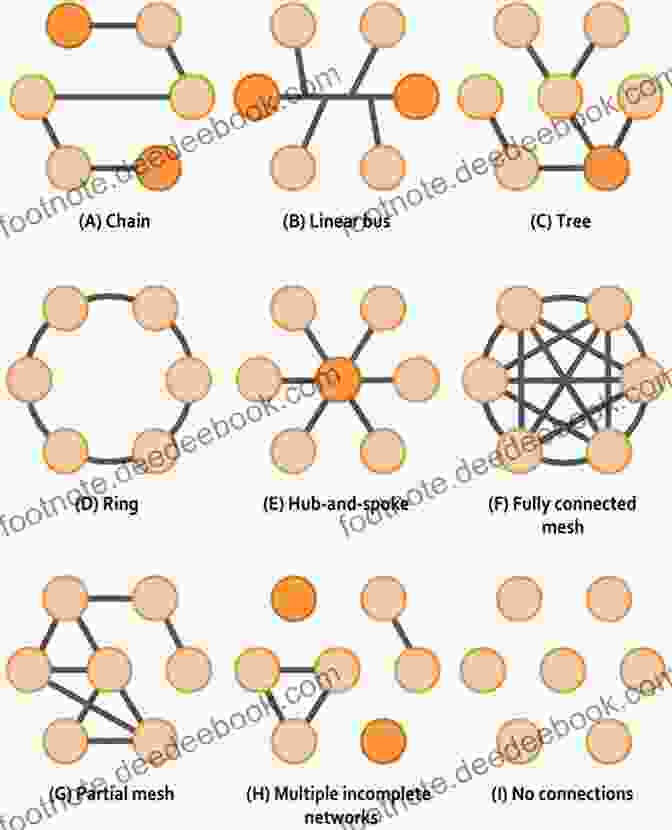Borders and Debordering: Topologies, Praxes, and the Hospitable


Borders are ubiquitous features of our world. They can be physical, such as walls or fences, or they can be social, such as customs or laws. Borders can divide people and create barriers, but they can also bring people together and create opportunities for exchange.
4.4 out of 5
| Language | : | English |
| File size | : | 2850 KB |
| Text-to-Speech | : | Enabled |
| Screen Reader | : | Supported |
| Enhanced typesetting | : | Enabled |
| Word Wise | : | Enabled |
| Print length | : | 242 pages |
In recent years, there has been a growing interest in the concept of "debordering." Debordering refers to the process of breaking down or blurring the boundaries between people and places. This can be done through physical means, such as the construction of new roads or bridges, or through social means, such as the promotion of cross-cultural exchange.
Debordering can have a number of positive benefits. It can reduce conflict, promote cooperation, and increase economic prosperity. However, it can also pose challenges, such as the spread of disease or the loss of cultural identity.
In this essay, we will explore the concept of borders and debordering from a variety of perspectives. We will examine the different types of borders, the reasons why they are created, and the consequences of their existence. We will also discuss the different ways in which borders can be debordered, and the potential benefits and challenges of ng so.
The Nature of Borders
Borders are lines that divide one place from another. They can be physical, such as walls or fences, or they can be social, such as customs or laws. Borders can be created for a variety of reasons, including:
* To protect a group of people from attack * To control the movement of people and goods * To establish a sense of order and identity * To mark the boundaries of a nation-state
Borders can have a number of different effects on people and places. They can create barriers, dividing people and preventing them from interacting with each other. They can also create opportunities, allowing people to connect with others from different cultures and backgrounds.
The existence of borders can be controversial. Some people argue that borders are necessary to protect people and places, while others argue that they are harmful and divisive. The debate over borders is likely to continue for many years to come.
The Topology of Borders
The topology of a border refers to its physical and spatial characteristics. Borders can be straight or curved, long or short, wide or narrow. They can also be porous or impermeable.
The topology of a border can have a significant impact on its effectiveness. For example, a straight border is easier to defend than a curved border. A long border is more difficult to control than a short border. And a wide border is more difficult to cross than a narrow border.
The topology of a border can also be used to create different types of spaces. For example, a porous border can create a space of exchange and interaction, while an impermeable border can create a space of exclusion and isolation.
The Praxes of Borders
The praxes of borders refer to the ways in which borders are used and experienced. Borders can be used to control the movement of people and goods, to enforce laws, and to mark the boundaries of a nation-state.
The praxes of borders can have a significant impact on people's lives. For example, borders can be used to prevent people from fleeing persecution or to reunite with family members. Borders can also be used to restrict trade and travel, and to create barriers between different cultures.
The praxes of borders can also be contested and challenged. People can cross borders without permission, smuggle goods across borders, or protest against the existence of borders. These acts of resistance can challenge the authority of the state and the legitimacy of borders.
The Hospitable Border
A hospitable border is a border that is open and welcoming to people from other places. Hospitable borders allow people to cross freely, without fear of persecution or discrimination. Hospitable borders also create spaces where people from different cultures can interact and exchange ideas.
Hospitable borders can have a number of benefits. They can reduce conflict, promote cooperation, and increase economic prosperity. Hospitable borders can also create a sense of community and belonging for people from all backgrounds.
However, hospitable borders can also pose challenges. They can lead to the spread of disease, the loss of cultural identity, and the erosion of state sovereignty.
The challenge of creating hospitable borders is to find a balance between openness and security. Hospitable borders must be open enough to allow people to move freely, but they must also be secure enough to protect people from harm.
Borders are a complex and contested phenomenon. They can be both divisive and hospitable, and they can have a significant impact on people's lives.
Debordering is a process of breaking down or blurring the boundaries between people and places. Debordering can have a number of positive benefits, but it can also pose challenges.
The challenge of debordering is to find a balance between openness and security. Debordered spaces must be open enough to allow people to move freely, but they must also be secure enough to protect people from harm.
The creation of hospitable borders and debordered spaces is a complex and ongoing challenge. However, it is a challenge that is worth pursuing, as it has the potential to create a more just and equitable world.
4.4 out of 5
| Language | : | English |
| File size | : | 2850 KB |
| Text-to-Speech | : | Enabled |
| Screen Reader | : | Supported |
| Enhanced typesetting | : | Enabled |
| Word Wise | : | Enabled |
| Print length | : | 242 pages |
Do you want to contribute by writing guest posts on this blog?
Please contact us and send us a resume of previous articles that you have written.
 Book
Book Novel
Novel Page
Page Chapter
Chapter Genre
Genre Reader
Reader Library
Library Paperback
Paperback E-book
E-book Magazine
Magazine Newspaper
Newspaper Paragraph
Paragraph Sentence
Sentence Bookmark
Bookmark Shelf
Shelf Glossary
Glossary Foreword
Foreword Synopsis
Synopsis Manuscript
Manuscript Bestseller
Bestseller Library card
Library card Narrative
Narrative Autobiography
Autobiography Memoir
Memoir Encyclopedia
Encyclopedia Thesaurus
Thesaurus Narrator
Narrator Character
Character Card Catalog
Card Catalog Archives
Archives Periodicals
Periodicals Study
Study Scholarly
Scholarly Lending
Lending Academic
Academic Reading Room
Reading Room Special Collections
Special Collections Thesis
Thesis Storytelling
Storytelling Reading List
Reading List Sara Caudell
Sara Caudell J M Hochstetler
J M Hochstetler Spencer Wilson
Spencer Wilson Manning Marable
Manning Marable Rebecca Behrens
Rebecca Behrens Dr Sandeep Jatwa
Dr Sandeep Jatwa Fiona Lewis
Fiona Lewis Arthur Rackham
Arthur Rackham Stump Connolly
Stump Connolly Nisa Santiago
Nisa Santiago Kirsty Manning
Kirsty Manning Tony Kushner
Tony Kushner Michael J Graetz
Michael J Graetz Michelle Lynn
Michelle Lynn Haley Lukas
Haley Lukas Seth A Johnston
Seth A Johnston Brett L Abrams
Brett L Abrams Be Kelly
Be Kelly Hicham And Mohamed Ibnalkadi
Hicham And Mohamed Ibnalkadi Garrison Nelson
Garrison Nelson
Light bulbAdvertise smarter! Our strategic ad space ensures maximum exposure. Reserve your spot today!

 Barry BryantLabor and Religion in the New Cotton South: Working Class in American History
Barry BryantLabor and Religion in the New Cotton South: Working Class in American History Colby CoxFollow ·6k
Colby CoxFollow ·6k Melvin BlairFollow ·12.5k
Melvin BlairFollow ·12.5k Jesse BellFollow ·13.4k
Jesse BellFollow ·13.4k Christopher WoodsFollow ·10k
Christopher WoodsFollow ·10k Josh CarterFollow ·5.4k
Josh CarterFollow ·5.4k Amir SimmonsFollow ·14.9k
Amir SimmonsFollow ·14.9k Tyrone PowellFollow ·19.1k
Tyrone PowellFollow ·19.1k Greg CoxFollow ·5.1k
Greg CoxFollow ·5.1k

 Allen Ginsberg
Allen GinsbergUnveiling the True Meaning of Enough: A Comprehensive...
: In the relentless pursuit of progress and...

 Clay Powell
Clay PowellHawker Hunter: The Jet Fighter that Shaped British...
Nestled in the halls of aviation...

 Alec Hayes
Alec HayesWhen and How to Use Lean Tools and Climb the Four Steps...
Lean is a management...

 Trevor Bell
Trevor BellVolume of Charlotte Mason Original Homeschooling: A...
Charlotte Mason's original...

 John Parker
John ParkerAscending Tristan da Cunha: A Comprehensive Guide to...
Prepare yourself for an extraordinary journey...
4.4 out of 5
| Language | : | English |
| File size | : | 2850 KB |
| Text-to-Speech | : | Enabled |
| Screen Reader | : | Supported |
| Enhanced typesetting | : | Enabled |
| Word Wise | : | Enabled |
| Print length | : | 242 pages |











